Fire is an uncontrollable element, and that is why it is so dangerous. If a fire occurred, then with absolute probability we can say that trouble can not be avoided. In the best case, furniture will be spoiled, and the worst consequence of a fire is the death of a person or even several people. If such a force majeure circumstance cannot be controlled, then all efforts must be made to prevent it. The developers of modern technologies could not ignore such an important topic as the safety of human life. Nowadays, you can find many ways of fire protection: from the use of non-combustible building materials or fire coatings (which include, for example, fire retardant paint) to the installation of special panels.
- Components of flame retardant paints and varnishes
- Principle of operation
- Does waterborne paint protect
- Before starting work
- Application Recommendations
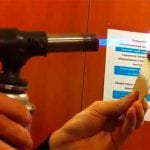
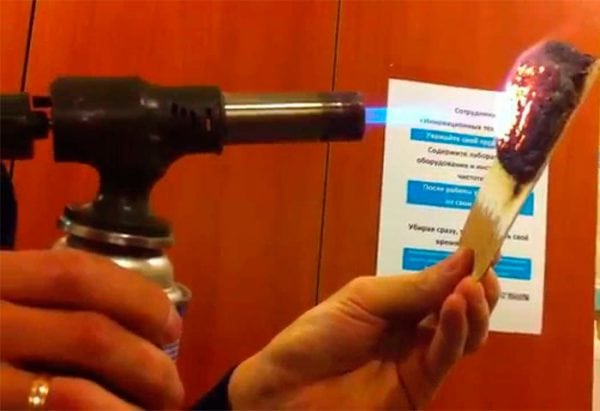
But, as a rule, each method has its pros and cons. For example, during the construction of a building, it is not always possible to replace an element with one that has flame retardant properties. Or there are rules that prohibit the closure of certain structural elements, which means it will be impractical to install panels. In addition, I want to not only protect my home, but also make it so that it retains a solid, attractive appearance.
It would seem a deadlock. Whatever you choose, you have to sacrifice something: either safety or aesthetics. Fortunately, you can find a tool that combines all of the above requirements. And this wonderful tool is fire-fighting paint.
So what is the secret of a refractory coating? How does it work? What types of fire retardant coating to choose for the processing of a particular material and structure? And how do you work with this kind of finishing raw materials?
to contents ↑Components of flame retardant paints and varnishes
Among the many fire-retardant measures, the paint seems to be something frivolous and not trustworthy. How can a thin layer of coloring matter “hold up” an all-consuming fire? Or, in other words, why do people trust the most valuable thing that a person has - his life?
The need for evidence of the reliability of these unique paints and varnishes will disappear if you understand their composition and mechanism of work.
Fire retardant paint is a mass capable of spontaneous hardening, which is obtained by mixing in certain proportions such ingredients as:
- fire-resistant filler (vermiculite, fluffy asbestos, kaolin wool, perlite, talc),
- pigment coloring
- liquid potassium or silicate glass,
- additives.
The ingredients are arranged in importance in descending order. Basically, the chemical composition of the coating consists of filler, pigment and a binder (water glass). The color pigment gives the mixture the desired shade or color, thanks to the filler, the paint has non-combustible properties, and the binder forms a uniform film when dried.
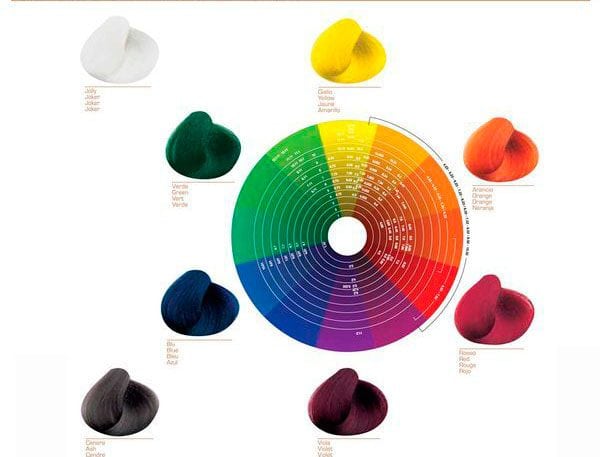
Refractory paints are available in two-packs.Before use, the contents of both containers are mixed: dry mix and binder. In some cases (for example, for water-based paints), pure water may be added, but not more than 15% of the total mixture. The resulting mass is suitable for 6-12 hours.
to contents ↑Principle of operation
Fire protection - a barrier to an ever-growing flame. It performs a number of functions, the result of which is the protection of the material or structure:
- Delays or prevents fire.
- It attenuates fire hazards.
- Helps reduce the spread of fire on the surface of the material.
- Absorbs heat from decomposition.
- It releases gases or releases water (depending on the species).
- Accelerates the appearance of a layer of coke (coal).
- It is easily restored (it is enough to paint again).
- It does not require professional skills.
- Decorates a room or structure.
According to the principle of fire-retardant action, fire-resistant material is divided into two main types:
- Non-intumescent paints when ignited turn into a kind of vitreous layer that prevents the continuation of the fire. The mechanism of operation is very similar to flame retardant (impregnation), but also have a decorative function (color decoration).
- Intumescent paints under the influence of strong temperatures can increase 10-50 times. The expanded foam layer, which is formed due to the gases released during combustion, thermally insulates the surface, thereby protecting it from serious harm.
By the way, in comparison with the previous type, intumescent materials are the most effective in terms of combating fire and its consequences.
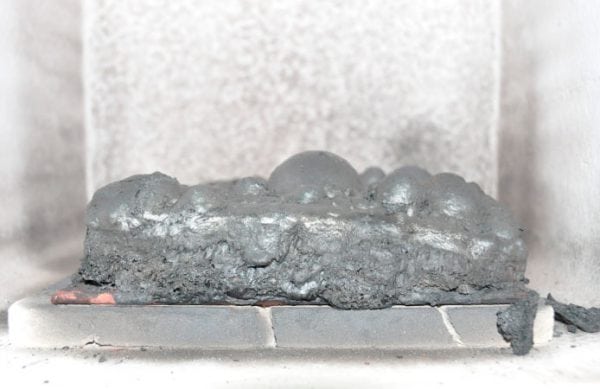
In accordance with the type of surface, the intumescent fire fighting solution is divided into paint for protection:
- structures made of concrete and reinforced concrete, including stairs (fire does not destroy them, but destroys them after 5-20 minutes after the start of the fire);
- wooden structures;
- steel construction objects (their bearing capacity is lost after 1-15 minutes);
- ventilation and air conditioning systems, ducts (through which air is supplied, which serves as a conductor for the spread of flame);
- roofs and facades;
- windows and their openings;
- cables.
Does waterborne paint protect
Of particular note is one subspecies of intumescent fire coatings - water-dispersion. The mechanism of their work when heating the surface is the formation of a heat shield, that is, hardened foam. It is used for painting wood-fiber, wood-shaving, plywood and wooden surfaces inside structures.
Latex bases, as they are also called, can cover any wooden structure that can be engulfed in flames: a shelving unit, a closed attic structure, ceiling, door, wall, floor. But the water-dispersion layer is unlikely to be applied outside the structure. The natural solvent of this paint is water, therefore, under the systematic effects of climatic precipitation (rain, snow, hail), it will simply be washed off. Therefore, it is used only when working indoors.
Water-based fire retardant paint does not contain organic solvents, so it is the most environmentally friendly among other types, which makes it so popular. In addition to the main, it is characterized by such positive properties:
- it is conveniently applied (using a roller or brush, there is the possibility of spraying);
- does not have a strong specific smell (both in the process of work, and later);
- little consumed (due to economical application in 1-2 layers);
- perfectly lays down (has a high degree of adhesion);
- it is easily tinted (you can give the desired color);
- does not burden a design.
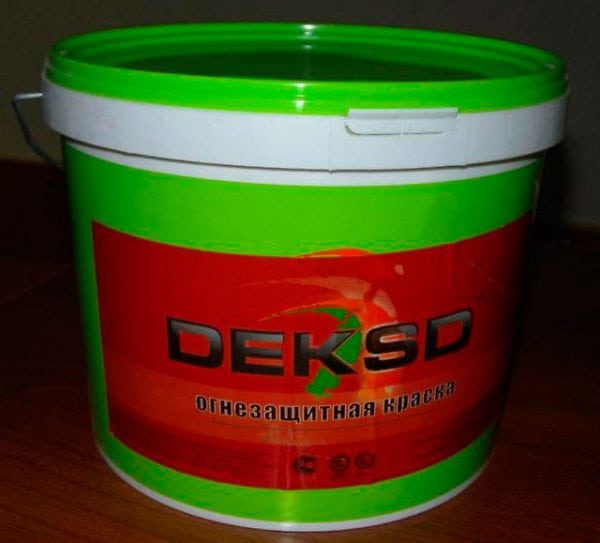
All of the above qualities are distributed between several types of water-dispersible fire retardant paint, the separation of which is justified by the difference between the binder polymers of the coating. So, allocate:
- paint based on PVA glue (an inexpensive base for painting walls and ceilings in dry rooms due to low moisture resistance);
- styrene butadiene paint (waterproof coating used in a poorly lit room due to low light resistance);
- acrylic paint (a universal coloring matter that has a number of advantages, which makes it especially attractive in the eyes of customers: it preserves color, dries and quickly, is not afraid of wet cleaning and ultraviolet sunlight, repels water well, allows the material to “breathe”).
Before starting work
Before starting the process of painting with refractory material, you need to perform a series of manipulations to prepare the surface for applying the coloring solution:
- Thoroughly clean the surface of the material (especially metal structures) from rust, dust, dirt and scale with rags or brushes and degrease it (the humidity level must not exceed 20%).
- Dry well.
- Coat the material or structure with one layer of rust transducer - anticorrosive primer to prevent the appearance of subfilm rust.
Application Recommendations
Now that the surface of the structure is completely ready for use, you can begin the procedure of painting.
From tools and containers you may need:
- gloves
- brush, roller, pneumatic sprayer (or airbrush differently);
- solvent for subsequent cleaning of tools or water with a surfactant.
Fire-resistant paint is applied at temperatures from 5 to 40 ° C above zero. The mass must not be allowed to freeze, otherwise it will only be necessary to throw away the goods.
The brush is dipped in the solution, and then it is slowly carried out on the surface 1-2 times. If a spray gun is used, the layer should not be thicker than 1 cm. It is important to control the thickness of the applied layer. This is done on the basis of criteria such as appearance, thickness and adhesion.
How well the coating has laid down can be determined visually: it should be without wrinkles, craters, bubbles, chips, cracks or passes. To measure the thickness, professionals use special gear rulers: they are applied to three different points on the surface at a distance of a meter from each other. In case of coincidence, the paint processing continues.
Be sure to monitor how well each layer dries. Before applying the second and subsequent layers, you need to make sure that in contact with the stained surface there are no traces and sticks on it. It should also be noted that when using a pneumatic sprayer with a flame retardant, the paint dries much faster than when treated with a roller or brush. If the layer is applied correctly, after a couple of hours, you can repeat the staining procedure.
Upon completion of work, all used tools should be washed with water from a surfactant or solvent. It is better to do this immediately after using the paint, otherwise after a while it will be almost impossible to remove residues of the coloring matter.
Fireproof paint is undoubtedly one of the most important gifts of science to humanity. With its help, you can not only protect your home from the devastating consequences of uncontrollable elements, but also minimize human losses. In addition, the fire retardant base will help to make a quality and beautiful finish indoors.Therefore, in a sense, processing with fire-resistant paintwork is not a matter of preference, but a direct necessity to ensure life safety.




